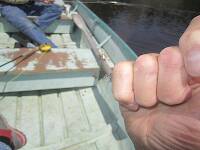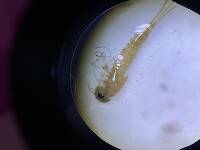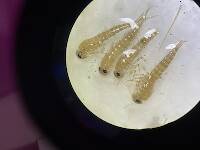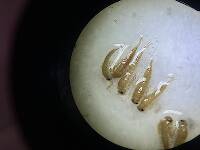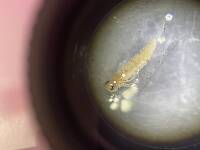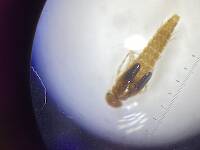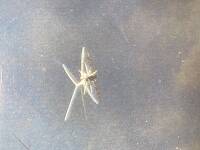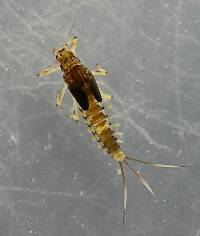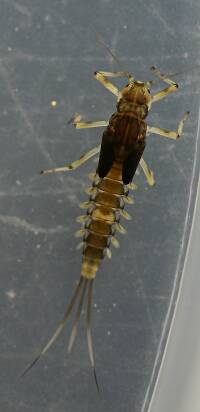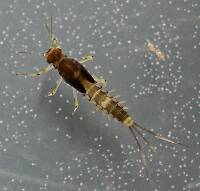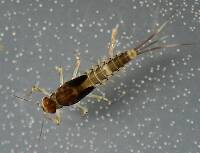
Blue-winged Olives
Baetis
Tiny Baetis mayflies are perhaps the most commonly encountered and imitated by anglers on all American trout streams due to their great abundance, widespread distribution, and trout-friendly emergence habits.
Featured on the forum

This specimen resembled several others of around the same size and perhaps the same species, which were pretty common in my February sample from the upper Yakima. Unfortunately, I misplaced the specimen before I could get it under a microscope for a definitive ID.

Troutnut is a project started in 2003 by salmonid ecologist Jason "Troutnut" Neuswanger to help anglers and
fly tyers unabashedly embrace the entomological side of the sport. Learn more about Troutnut or
support the project for an enhanced experience here.
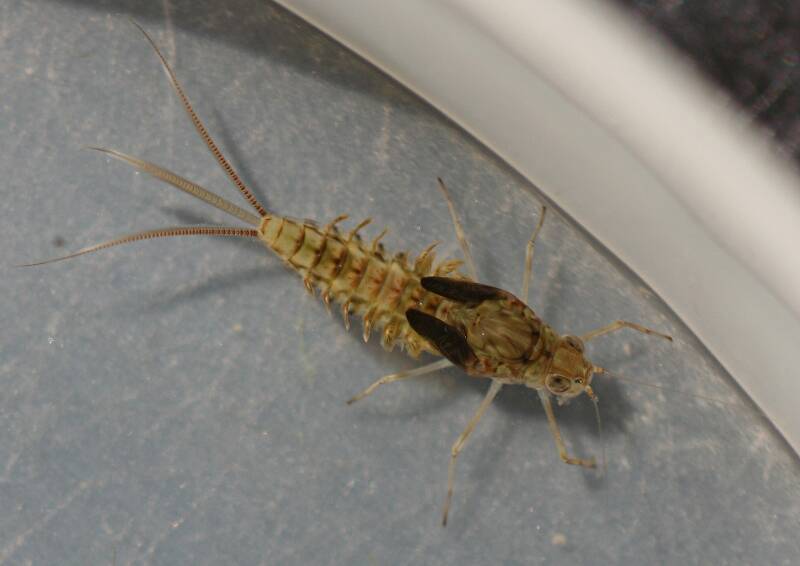
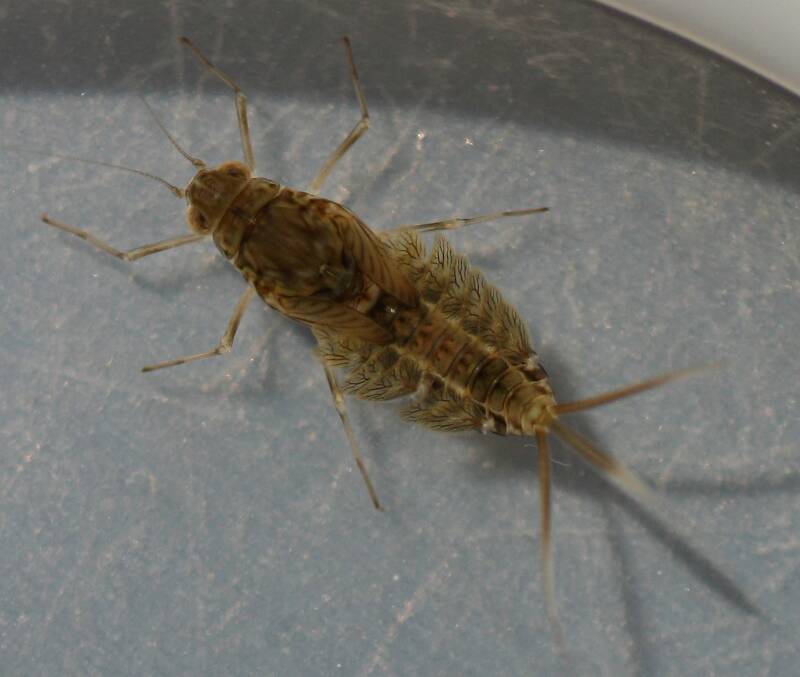
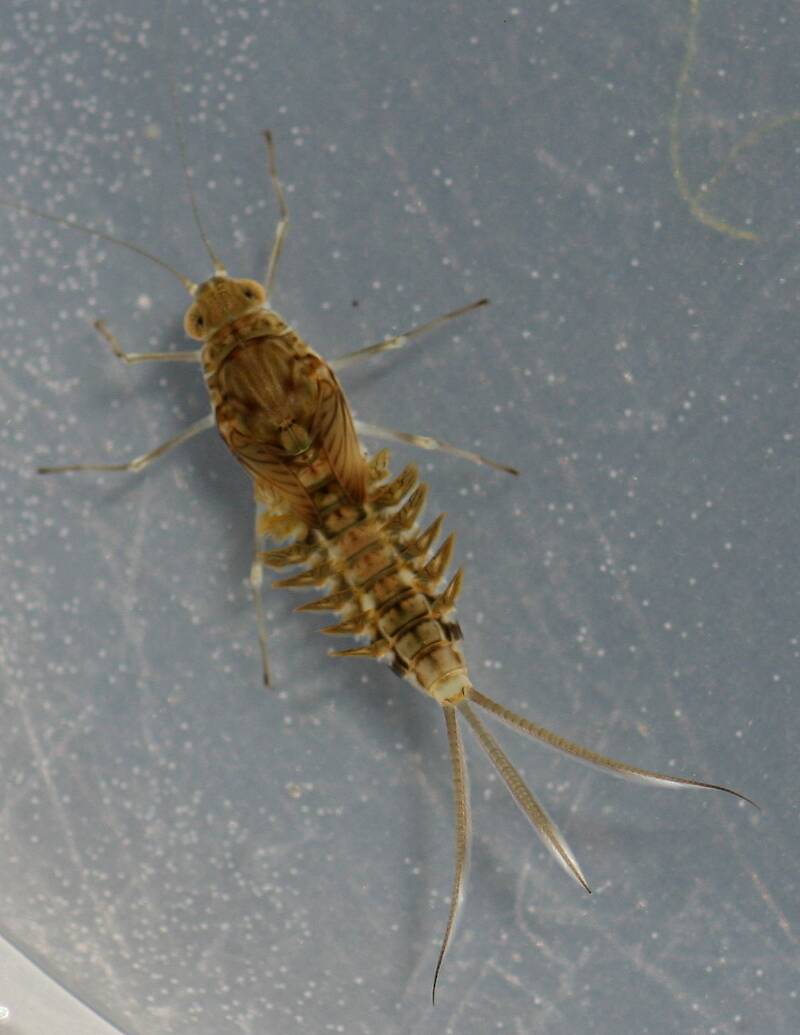
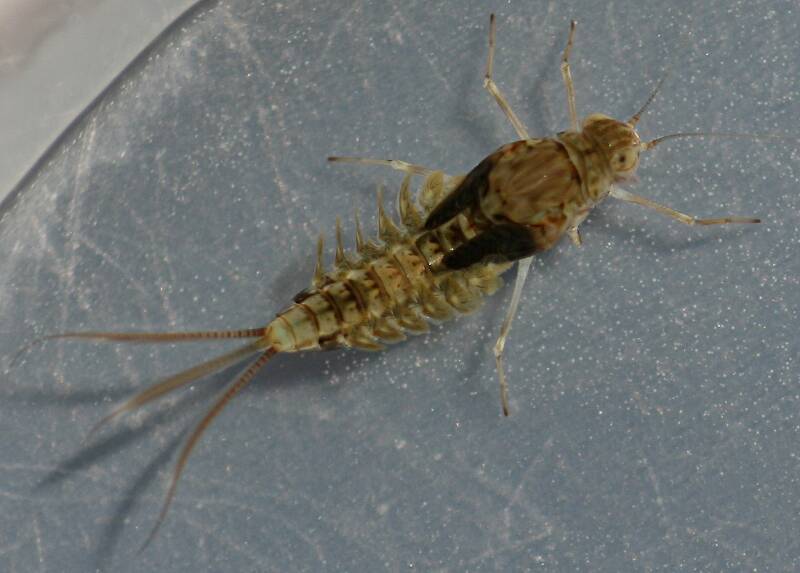
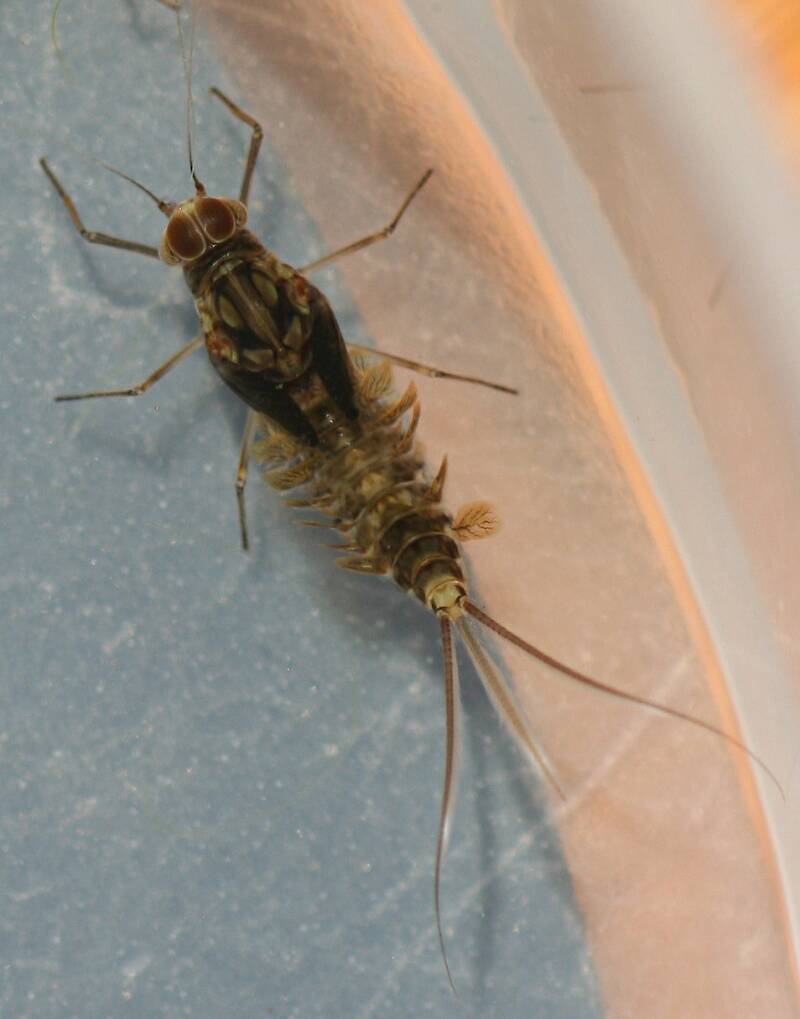
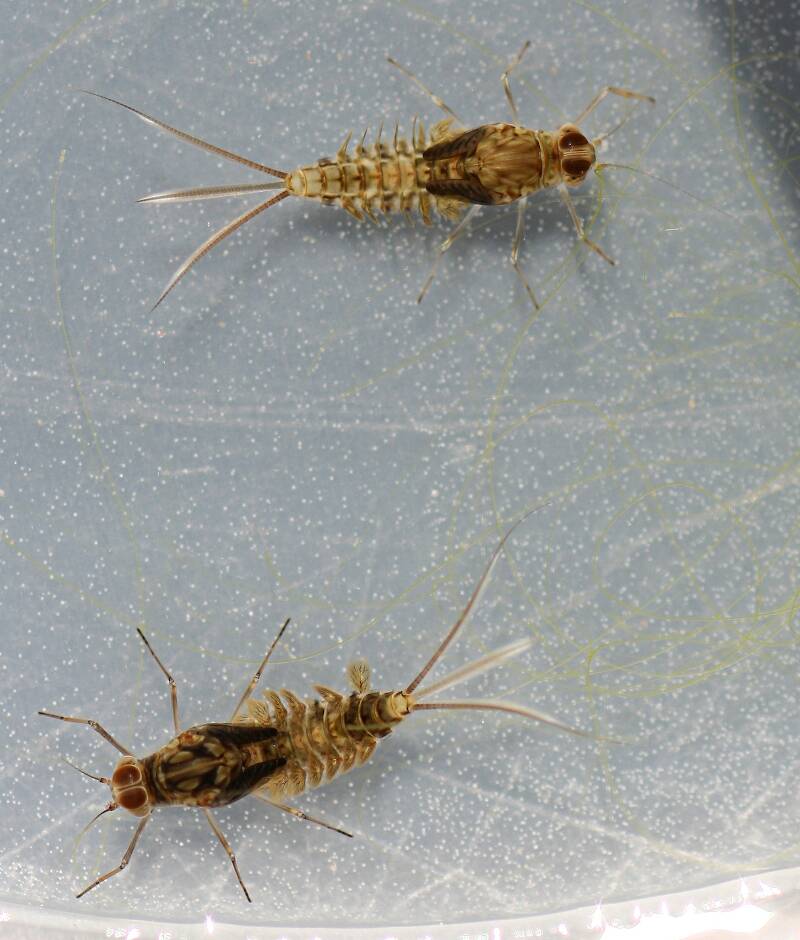
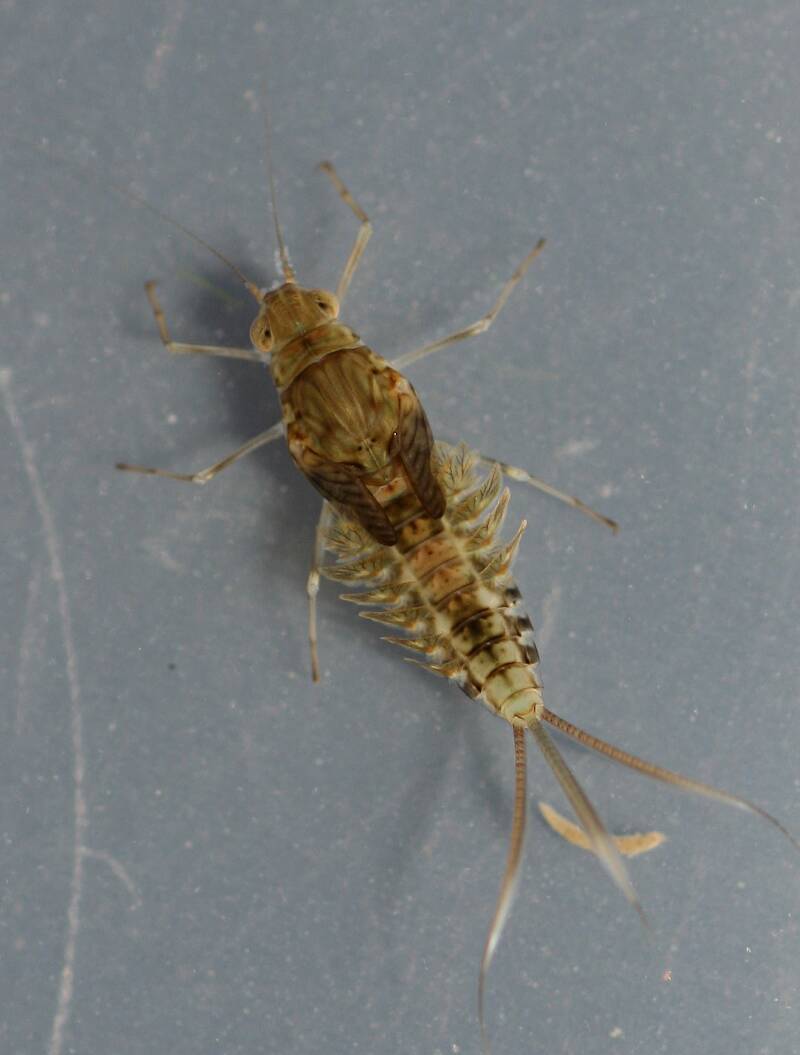
Millcreek on Apr 28, 2015April 28th, 2015, 7:20 pm EDT
These are common in the Russian River. They're usually found in cutoff pools. The pools have stagnant water with large algal growths and temperatures are higher than the river itself.
They're probably Callibaetis pictus since the adults are common at the river right now.
They're probably Callibaetis pictus since the adults are common at the river right now.
"If we knew what it was we were doing, it would not be called research, would it?"
-Albert Einstein
-Albert Einstein
PaulRoberts on Apr 29, 2015April 29th, 2015, 3:29 pm EDT
Pretty critter. They look a bit like Siphlonurus. I wonder how closely related the two might be?
Millcreek on Apr 29, 2015April 29th, 2015, 6:52 pm EDT
Probably pretty closely related. Callibaetis belongs in Baetidae while Siphlonurus belongs in Metretopodidae generally a limb below Baetidae on a tree of life. Can be seen in common names as well: Small Minnow Mayflys for Baetidae and Primitive Minnow Mayflys for Siphlonurus.
Easiest field ID is Siphlonurus has short antennae (about head length) while Callibaetis has long antennae (about 3 or 4 times length of head).
Easiest field ID is Siphlonurus has short antennae (about head length) while Callibaetis has long antennae (about 3 or 4 times length of head).
"If we knew what it was we were doing, it would not be called research, would it?"
-Albert Einstein
-Albert Einstein
Taxon on Apr 29, 2015April 29th, 2015, 8:42 pm EDT
Hi Mark-
I believe Siphlonurus is in family Siphlonuridae, whereas Siphloplecton is in family Metretopodidae.
while Siphlonurus belongs in Metretopodidae
I believe Siphlonurus is in family Siphlonuridae, whereas Siphloplecton is in family Metretopodidae.
Millcreek on Apr 29, 2015April 29th, 2015, 8:56 pm EDT
Roger-
You're right, my mistake.
I believe Siphlonurus is in family Siphlonuridae, whereas Siphloplecton is in family Metretopodidae.
You're right, my mistake.
"If we knew what it was we were doing, it would not be called research, would it?"
-Albert Einstein
-Albert Einstein
Taxon on Apr 29, 2015April 29th, 2015, 9:59 pm EDT
No problem, Mark. Many viewers would label me as a/r for even having mentioned it :-)
PaulRoberts on Apr 30, 2015April 30th, 2015, 1:54 am EDT
Definitely mention/correct where needed, Roger. That's what makes this site so good.
Quick Reply
Related Discussions
Topic
Replies
Last Reply
1
Jan 15, 2018
by Millcreek
by Millcreek
6
Aug 21, 2010
by Gutcutter
by Gutcutter
13
Jun 13, 2012
by Brookyman
by Brookyman




